Here it is – our first check dam built in Tirzada. This post could have be titled: ‘What we learned in Tirzada’ – because the learnings came thick and fast. And in fact there was so much to be learned it has taken until now to write the story.
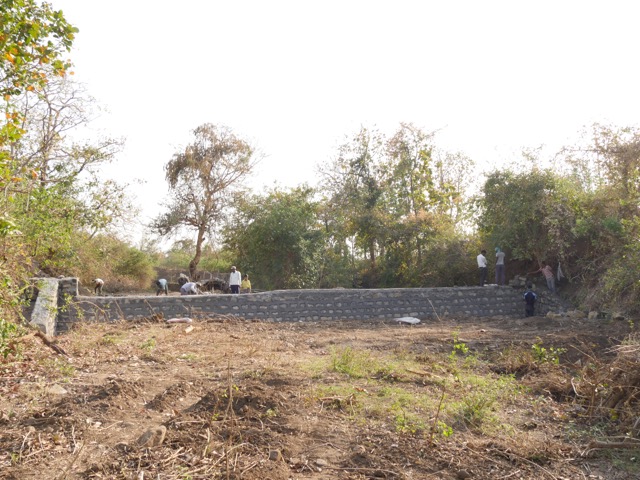
After much preparation – three visits to the area – journeys of discovery – to speak with the villagers and with those who were already doing the water work we felt ready to go ahead. And finally with the help of many friends the fund raising was completed.
A flurry of crowd funding efforts – bringing in over AUD 6000. Enough we felt to do the construction.
We began with a puja – a ceremony to bless the place where we were to create the dam – then a JCB excavator came to clear the rough scrub and dig the trench where the wall was to be built.
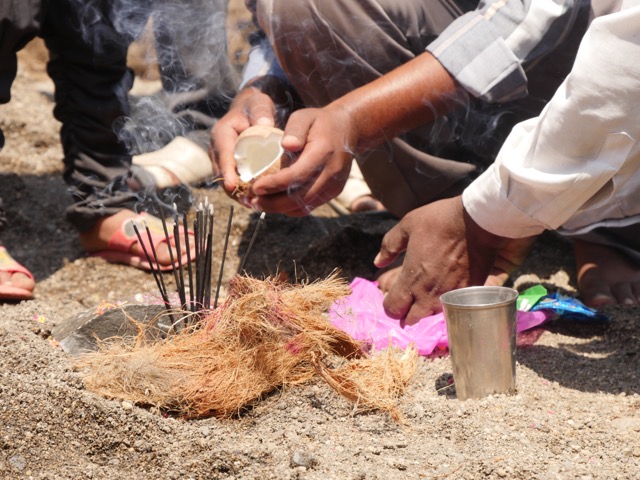
Our plan was to complete in 8 days. More like three weeks later the dam had taken shape. We had a team of 10 labourers, 2 mistry’s (Mistry being the word for the skilled tradeperson) – and one of the local farmers who officially supervised the project and took care of the purchasing of materials. I went each day to the site accompanied by my translator and friend Satish Mankar and kept a watch on the ongoing work.
Working in India is very different to working in Australia – time is most certainly not the same and I needed to control my ‘foreigner mindset’ as the labourers ambled in each morning and seemed to wander around often apparently aimlessly at times.
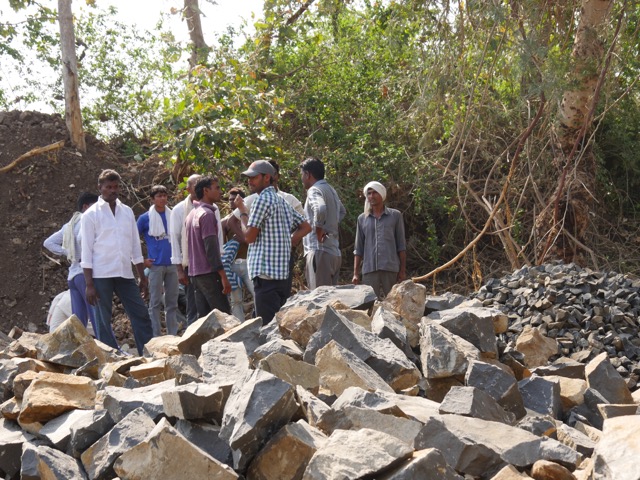
But as the days wore on I began to understand – it was so hot – the rocks they carried on their heads so heavy – the cement bags – the steel bowls full of cement – they needed to rest – the work was simply too hard to hurry.
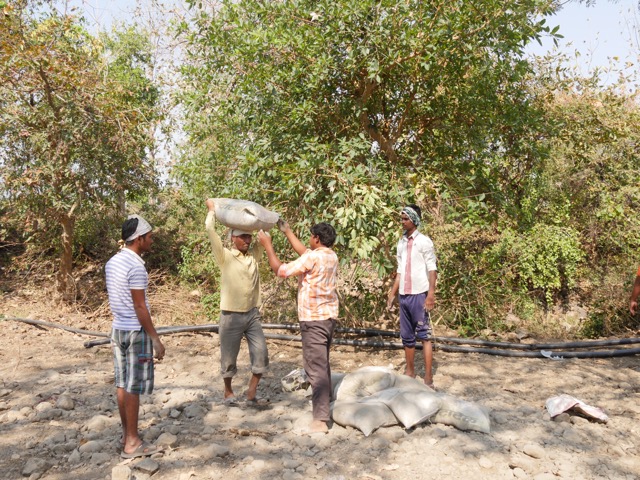 My impatience receded and I spent the days in a shady spot under the precious trees – every now and then emerging to take photos of progress and to make attempts at conversation with the local farmers who had come to watch.
My impatience receded and I spent the days in a shady spot under the precious trees – every now and then emerging to take photos of progress and to make attempts at conversation with the local farmers who had come to watch.
Time passed and the dam wall grew – it became far bigger than I had ever imagined. Satish and I were very lucky – we stayed with a family who took wonderful care of us – and we were intoduced around the village to many people – visiting the homes of the locals – meeting groups of farmers, and one of the local women’s groups.
At the last – I made an error of judgement. Allowing myself to be persuaded with a firm promise that the trees would be saved, I left the final stage of the work to be done without me.
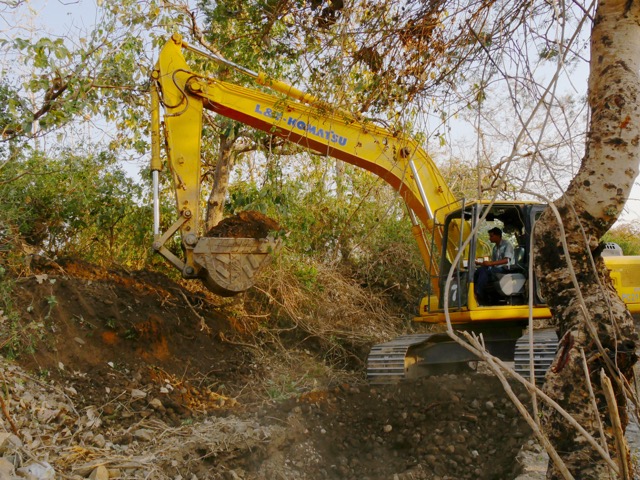 However when we returned two weeks later to erect the board acknowledging the donors and the builders – I was shocked. We had come to do a celebration for the completion. But I didn’t feel like celebrating. My insistence on saving the beautiful trees in the area had gone awry – and many had been damaged or taken out in the earth moving process.
However when we returned two weeks later to erect the board acknowledging the donors and the builders – I was shocked. We had come to do a celebration for the completion. But I didn’t feel like celebrating. My insistence on saving the beautiful trees in the area had gone awry – and many had been damaged or taken out in the earth moving process.
I know when I come back there in August it will be a very different picture .. as the heaped earth sides of the dam will have been ‘pitched’ – that is protected with stones and grass – and the rainy season will have delivered its bounty down the ‘nallah’ (stream) and filled the dam with life giving water.
As my friend said.. sometimes things need to be destroyed in order for something new to be created.
And this dam when filled and feeding into the underlying water table should directly affect the supply of year round water to at least 20 farmers in the immediate vicinity. This will be a result that is worth the loss of the trees, and our intention is to plant many more on the banks.
It is known that the presence of trees around water ways assists greatly in the percolation of the water into the aquifers so it is very important to educate the local farmers to help us in this work.
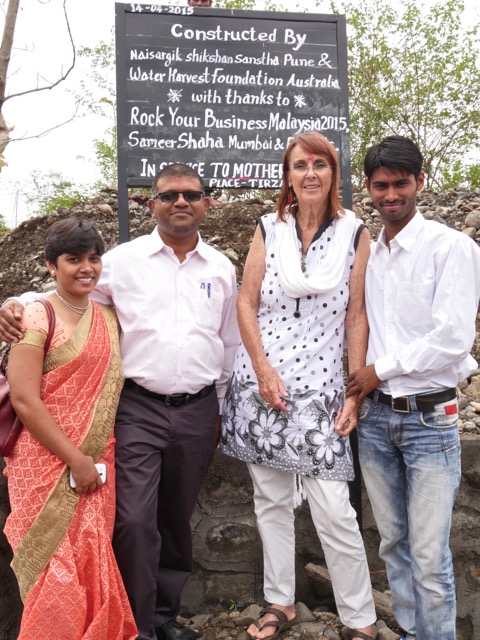
We have plans for many more dams … with the learning that we did in the construction of this dam – we can do better next time.
Check dams and water conservation will save lives in this area.
(For a more personal slant on the story follow this link)

